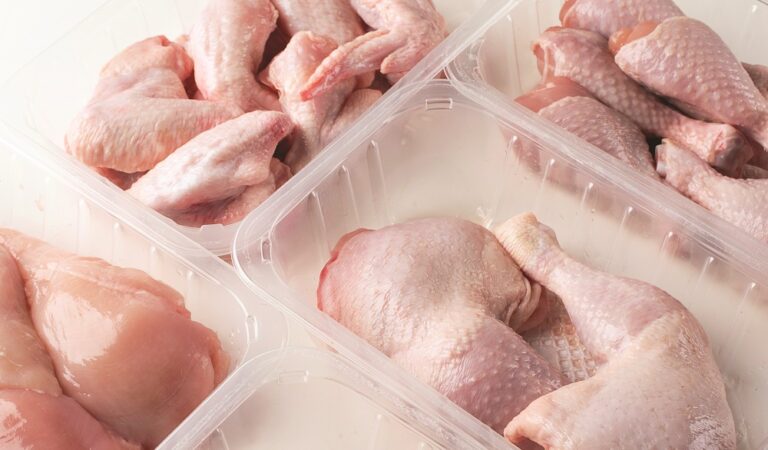The FSA has published the Year 4 report for the UK retail chicken survey which took place between August 2017 and July 2018. Samples were collected every quarter but after the first quarter only minor retailers were tested. The UK’s top nine retailers have carried out their own sampling since September 2017.
The report found that high level campylobacter contamination in UK chickens has decreased considerably, but remains high in smaller retailers, independents and butchers.
Rebecca Sudworth, Director of Policy at the Food Standards Agency, said: “Retailers have achieved significant reductions in levels of campylobacter contamination since the retail chicken survey began in 2014. The FSA will continue to engage with industry and particularly smaller retailers, butchers and independents to build on this progress.”
During the first months of this 4th survey year chickens (n = 1044) were sampled from all retailer groups, including major retailers, with the large majority (98 %) tested from August to October 2017 (hereafter referred to as the first sampling period). Based on this data, Campylobacter spp. were detected in the majority (56 %) of chicken neck skin samples and 7 % of samples had > 1000 cfu per g chicken skin (highly contaminated chicken category). There were significant differences in the proportion of highly contaminated chickens (ranging from 0 to 21 %) between the different types of retailers that could not be explained by differences in remaining shelf-life, chicken weight, sampling period or the type of rearing used. Comparison of individual approval codes (signifying the slaughter house premises) also showed a significant difference in the proportion of chickens with >1000 cfu per g, ranging from 0 to 27 %, and it was noted that some retailers were predominantly supplied by specific approved slaughter premises. There was no significant difference in the proportion of highly contaminated chickens between smaller or larger chickens. There was no evidence of birds with access to range (e.g. free-range and organic birds) being more contaminated than birds reared under standard conditions, but with much fewer free-range and organic birds tested there was limited precision in the comparisons made.
Chickens from smaller retail shops were tested for an entire year, from August 2017 to July 2018 (n = 829). Campylobacter spp. were detected in 75 % of these chicken skin samples obtained from non-major retailer shops, and 15 % of samples had counts above 1000 cfu per g chicken skin. Comparison of individual approval codes showed a significant difference in the proportion of chickens with >1000 cfu per g, ranging from 0 to 24 %. The proportion of samples with > 1000 cfu/g of Campylobacter spp. was not significantly different over the different sampling periods for these samples collected from an entire year from the smaller retail shops. There was no significant difference in the proportion of highly contaminated chickens between smaller or larger chickens nor was there any evidence that birds with access to range (e.g. free-range and organic birds) were more contaminated than birds reared under standard conditions.
Taking into account all samples tested during the 4th survey year, C. jejuni alone was isolated from the majority (78 %) of chicken skin samples from which isolates were submitted for speciation (n = 1024). Campylobacter coli alone was identified in 16 % of samples. Both species were found in 6 % of samples. C coli was more frequently isolated from birds with access to range in comparison to those reared as standard birds.
In the samples tested from non-major retail shops, from the entire year (from August to July 2018), C. jejuni was slightly less prevalent during the summer period compared to the rest of the year but this difference was not statistically significant.


